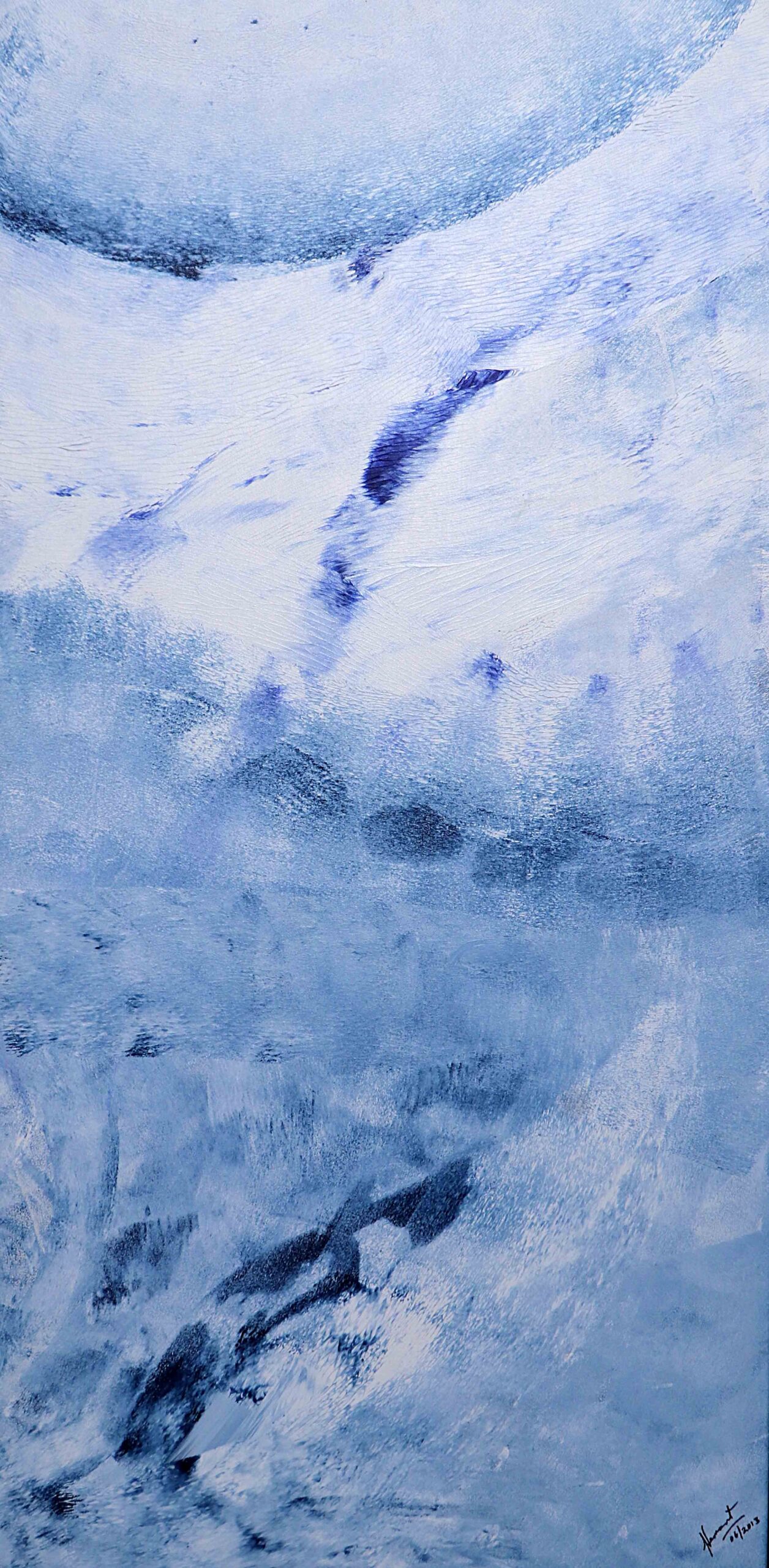POETICS OF KABIR
IN STONE AND BRICK
Uma Nair
At the Habitat Centre this January was a brilliant exhibition created in stone and brick that had a very queer title. ‘ Often I miss You’ didn’t quite seem to fit in with the depth and mystic feel of the works of Girjesh who was brought here from Mumbai. However, based on the poetics of Kabir and his philosophy, here was a show that displayed a cool-headed precision and deeply reverential and sanguine foundation. Girjesh’s peculiar yet neo-classical style is something to contend with, perhaps, as he presents quasi-religious scenes which appear emotionally frozen yet as fundamental and
irreducible as bones or bedrock. With a crystalline, mathematical geometry and a cool-temperature precision his works consistently display a balance and perfection which emanates from the parts themselves, like a psalm/hymn/bhajan when it is sung. His is a world of incremental measurements and soft shifts of value. The medium of his work inspires him. His choice of stone and brick – are an amalgam of rare blends but seem to be close to his heart as he grew up with these materials.
Girjesh believes that conventionally an idea needs to be expressed in a material, but unconventionally a material provides its own idea or story. Stone is a traditional medium and brick comes up as the unusual one. He says, “A lot has been done in stone and it’s a challenge, but there is still some story. When I see brick with cement I feel the brick carries its identity even when taken out of its structure”. The center piece ‘Jhini re Bini’ is inspired by Kabir’s poem, where he compares life to a sheet or a covering, which is soaked in the identity of God. His work also focuses on the five elements: earth, water, air, fire and space. The pillars have an expression of an element on the outside (convex) and on the inside (concave), have a script with alphabets and symbols that have been inspired by various civilizations from all over the world. At the seat of each pillar sits a lotus that shows how nature has bestowed all four elements in this one magnificent flower. The human figure, which is a part of this work, also carries the lotus. In many ways the lotus whispers a little prayer and echoes the testimony of a relic as it offers multiple reflections of the parallels of religion.


